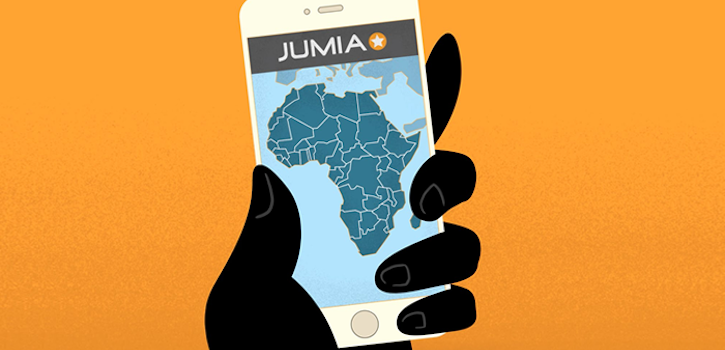Most people know the story of the continent’s first unicorn, Jumia, the record-setting company that showed the world that ecommerce could thrive in Africa, and sealed the statement by pioneering an IPO listing on the New York Stock Exchange in 2019. More intriguing was Jumia’s ability to accomplish this in a business environment that was swallowing other ecommerce businesses.
In Nigeria, Jumia’s biggest market, operational woes forced the closure of MallforAfrica and Payporte, two big ecommerce names in the region. Konga, another ecommerce company trailing Jumia in Nigeria, which had raised a total of $79.5 million in VC funding, was eventually sold off at an undisclosed price—generally rumoured as a loss.
Jumia has had its own troubles. A report by a notorious short seller sent its stock price downhill in 2019 and a combined loss of $2 billion since its launch has prompted questions about its business model. This has led to the reorganisation of the business, and a focus on moving toward profitability since 2019. Yet the losses have continued, and for the first time, Jumia may have to worry about its liquidity position.
A precarious cash situation
Jumia failed to hit its goal to be profitable by 2022, despite cutting down its advertising spend and launching a logistics and advertising business. While the e-commerce company is “profitable after fulfilment”, a metric which refers to the fact that it makes money on every delivery unlike a few years ago, its general and administrative costs remain high. Despite hemorrhaging millions quarter on quarter, Jumia has mostly maintained a great liquidity position, using its deep pockets to absorb losses as it tries to figure out a profitable model.
In 2016, Jumia raised $493 million dollars in the biggest VC round ever done in Africa by then, waltzing its way into unicorn status with a truckload of cash for runway and product experiments. But by 2020, four years and several product iterations later, Jumia’s cash balance stood at $178.4 million in its third quarter report. At the time of this report’s release, the company had incurred an operating loss of about $109.3 million in just nine months. This cash situation painted a blurry picture for the company’s runway, and for a public company, the silver bullet was to turn to the public markets for cash.
Thankfully, Jumia’s stock prices were doing fairly well at the time, with shares closing at around $31.54. Jumia eventually sold 7,969,984 ADR shares at an average price of $30.51 per share and raised $243.2 million in the process. Once again, the ecommerce giant was in the green, runway was extended, and the race to profitability continued with less imminent pressure. With this fresh capital injection, one would imagine that Jumia was buoyant enough to fly for another year, but it wasn’t long before Jumia returned to the public markets for cash.
In 2021, as Jumia was on its way to record operating losses of over $40 million in its first quarter, the company returned to the public markets, capitalising on a bull run of its stock prices—which, at the time, was generally criticised as being overvalued—to raise $348.6 million. Jumia sold almost 9 million ADR shares at an average price of $38.90. Thus, in a space of about three months, Jumia raised over half a billion dollars from the public markets to hedge against its losses and move decisively toward profitability.
The company’s Q1 reports for 2022 reflected this abundance; over half a billion dollars sat on the balance sheet by the quarter’s end. However, Jumia went on to close the year with a revenue of $177.9 million, recording losses to the tune of $226.9 million.
Jumia continued its losses for the three quarters it reported in 2022, losing an average of $59 million per quarter, a rate that could easily bring the total losses for 2022 to over $236 million. Anything short of this figure when Jumia releases its Q4 reports by next month will mean that the company’s attempt to rein in its losses is bearing fruit and gradually becoming consistent, especially as the ecommerce giant was able to reduce its QoQ losses between Q2 and Q3 by $24.5 million.
However, it’s easy to see that Jumia has returned to a relatively low liquidity position, reporting only $104.3 million in cash and a total liquidity of $284.7—figures which, by the end of last year, would have been reduced by, say, a modest figure of $40 million. This practically suggests that Jumia has gotten to a historically low liquidity position since its cash-in from the public markets in 2020. And this is happening at a time when the public market is hardly a go-to, seeing that the JMIA stock has taken a beating down to a share price of about $3.
As profitability remains an ambition for Jumia, maintaining runway must take centre stage in business operations, and cash has to come from somewhere. Under the present circumstances, what options are available for Africa’s ecommerce giant to raise capital? A near-impossible market share sale? Or an expensive debt route in an inflationary environment? If these options represent the deep blue sea, then insolvency is the devil. And Jumia is in between them.
Will Jumia’s new leadership rein in losses?
Jumia simply can not continue to replicate its past losses. Now more than ever, the company must push towards profitability and permanently bring down its expenditure, most of which went up according to its last reported quarterly updates. To make these changes, Jumia must make hard decisions and stick by them. Hard decisions like concentrating its leadership within Africa and appointing a new Acting CEO when the co-founders could not deliver profitability within a decade.
Now, as Francis Dufay takes over the helm of affairs, the company, its stakeholders, and the millions of people who have bought into the stock’s promise are waiting to see how the story flips from a giant business losing runway amid losses, to a thriving and profitable one with optimised internal operations.
Notably, Jumia showed early promise of profitability between the first two quarters of last year, increasing orders by one million, gross merchandise value (GMV) by $18.9 million, and marketplace revenue by $9.7 million, but this growth didn’t continue for long. The Q3 reports showed an order reduction of 900,000 units, GMV decline of $30.4 million, and a revenue cutback of almost $7 million.
This sinusoidal growth mode is what Jumia must avoid at all costs. After 10 years, the “Amazon of Africa” has grown to represent the success of ecommerce in Africa. The company bears the goodwill of Africans, which is why Ismael Belkhayat, founder of the YC-backed Moroccan startup, Chari, would say that he is totally in love with Jumia and is rooting for the company’s growth, despite not particularly enjoying the experience of Jumia.





















